
Curious as to which state quarters are valuable? This piece discusses the most valuable state quarters that are valuable and why they're most valued by collectors. Explore rare mint mistakes and high-grade coins that bring substantial prices.
Curious as to which state quarters are valuable? This piece discusses the most valuable state quarters that are valuable and why they're most valued by collectors. Explore rare mint mistakes and high-grade coins that bring substantial prices.
The Statehood Quarter Program was initiated by the United States Mint to appeal to a new generation of coin collectors and celebrate the rich history of each state. Some of the most interesting facts about the program are:
Throughout its 10-year duration, the program made over 34 billion quarters, proof of the size of popularity and the widespread range of mintage that had mirrored diverse demand. The program not only revived coin collecting as a hobby but also left a lasting legacy in American culture, with state quarters becoming a standard on which collectors expanded their collections.
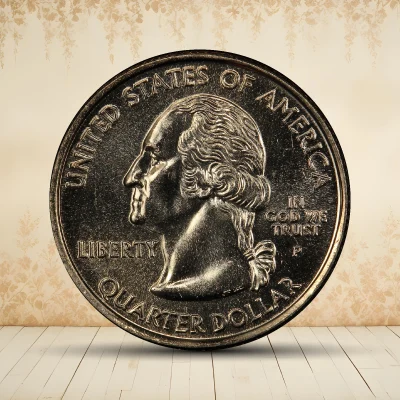
The price of state quarters is due to numerous factors such as:
Mint marks, which would tell one the where a quarter was produced, would also make it valuable. Quarters produced at certain mints, particularly those that have special finishes such as the Denver Mint, are typically highly sought after by collectors. Demand for the design of a quarter and supply and demand factors in the market would also add to its value.
It is essential that a person learns about these determinants, particularly to those who are interested in collecting coins, to learn what quarters are worth more than their face value.
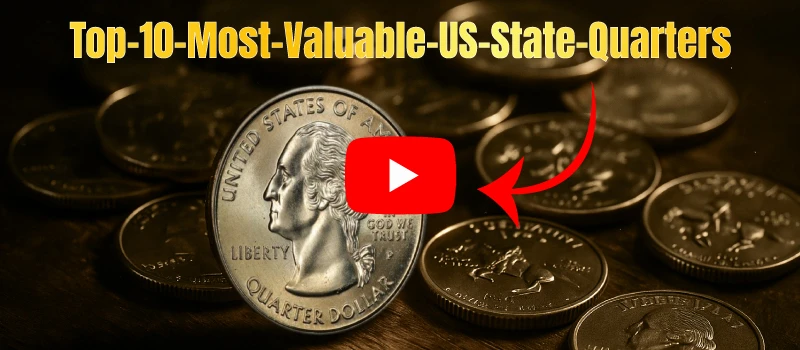
Some of these states have been in high demand because they are rare and unique, thus making them a favorite among the collectors. For example, the Texas 2004-P quarter can fetch prices of up to $10,000, and the 1999 Connecticut quarter has been sold at a price of up to $10,000. These coins are not only renowned for their history but also for the tale that is revealed by their errors and individuality.
State quarters are known for their potential high market value due to unique characteristics and limited availability. In the following subsections, we’ll delve into some of the most valuable state quarters, detailing their unique errors and what makes them stand out.
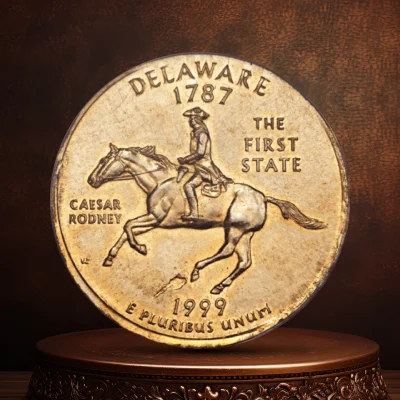
One of the most interesting error quarters is the 1999-P Delaware Spitting Horse Quarter, which can retail for as much as $500. The error quarter was christened as such due to a line appearing to spit from the horse's mouth, caused by a distinct die break. delaware quarter is one such error coin.
This mistake makes the Delaware Spitting Horse Quarter so interesting to collectors. To be able to have such an unusual and famous error significantly adds to its value and attractiveness in the market.
Finding one in a set is a wonderful discovery.
The 2004-D Wisconsin Extra Leaf Quarters are unusual with an uncommon error of an additional leaf on a corn stalk. Key points include:
These minting flaws have made the Wisconsin Extra Leaf Quarters more valuable as a collection. Their rarity and the legend about their scarcity make them the object of desire in any collection.
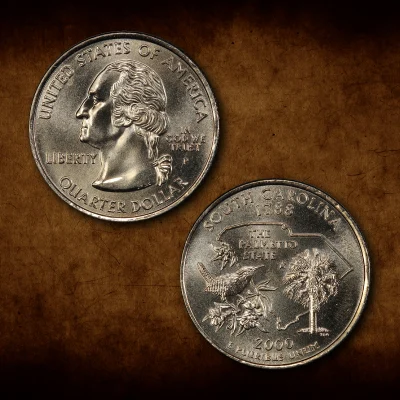
The 2000-P South Carolina State Quarter is so rare because of its high quality and limited mintage. This mint state quarter can fetch up to $8,000. Fewer than one hundred of these quarters have been graded MS69, thus these are extremely rare and valuable.
This quarter is a fine example in the statehood quarter series, showing how condition affects the value of a coin. To collectors, discovering a 2000-P South Carolina columbia quarter in mint condition is discovering treasure.
Error coins in the state quarters series are worth a lot more than face value because of their rarity. These are the very errors that are sought by collectors since they are anomalies in striking that are unique and scarce. Successful collecting of state quarters is dependent on good understanding of error identification techniques and price determiners.
Some of the most sought-after error coins are the 2004-D Wisconsin Extra Leaf Low quarter, which is $6,000 in MS67, and the 2005-P Minnesota quarter doubled die error. These errors, sometimes even not visually noticeable, will greatly increase the value of a coin. One will be helped with magnification to spot these coveted errors.
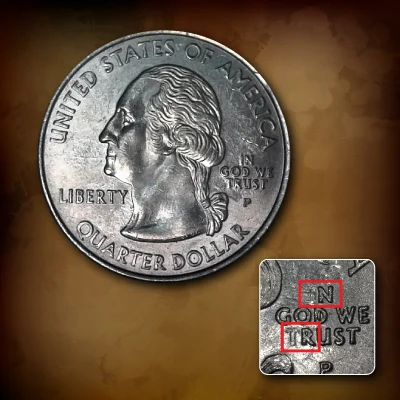
The 2004-P Texas State Quarter contains grease strike-through error apparent that renders it very collectible by the coin collector community. It happens when the grease on the die does not allow the complete design to strike on the coin.
Quarters with this mistake, particularly those that are graded MS69, can fetch as much as $10,000. This makes the 2004-P Texas quarter paradise for collectors, highlighting the power of minting mistakes in adding value to a coin.
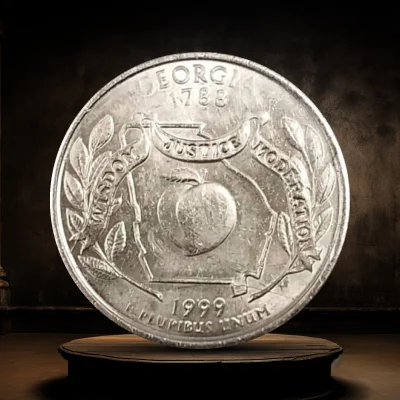
The 1999-P Georgia quarter is another notable error coin, featuring a deep die cap and double struck error. This unique error occurs when a coin is stamped multiple times, creating a distinct impression that can greatly impact its value.
This quarter has been sold for as much as $4,200, highlighting its significance within the state quarter series. Collectors prize these unique errors for their rarity and the intriguing story they tell about the rarest state quarters minting process, making it a valuable state quarter.
High-grade state quarters will be more valuable since they are mint condition and rare. Key things to remember are:
Condition serves a significant role in the valuation of quarters. Stating quarters in high grade is similar to finding a gem for collectors since these coins do not lose the original luster and detail.
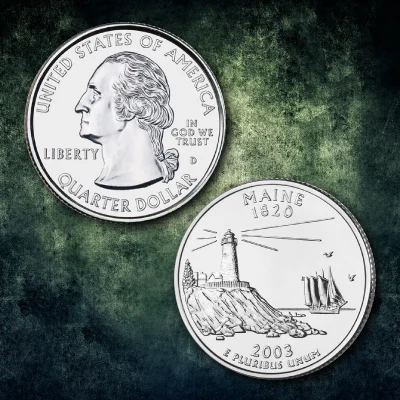
The 2003-D Maine quarter, graded MS68, is worth around $2,300 since it is in mint condition. The quarter is a total representation of one of the state quarters of the Statehood Quarter Program.
The high quality of coins is indicated by MS68 grade, which means higher market value. It is a great achievement of success for collectors to have their 2003-D Maine quarter graded MS68.
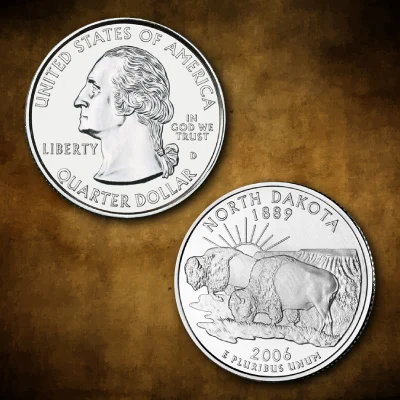
The 2006-D North Dakota state quarter is also rare in high grades. The coin with a grade of MS68 can reach up to $3,760 at auction. The August 28, 2006 minting of the quarter is value and condition and ranks among the highest collected coins by numismatists.
State quarter collecting can be an entertaining hobby, particularly if the interest is in error coins because these are of high value and appeal to a coin. Deep die cap errors, for instance, will cause a coin to appear thicker and could be of interest to collectors because they are unique.
Practices that are vital to collectors include:
Quality over quantity and beginning with low-cost error coins will allow new collectors to create a high-value, valuable collection of specialty coins and collectible coins.
Mint marks serve as critical identifiers of where a coin was produced, with the primary mints in the U.S. being:
These marks can significantly influence the collectibility and market value of quarters, as certain mint locations produce coins that are rarer and more sought after by collectors.
Understanding the role of the mint mark is essential for collectors aiming to build a valuable collection. These small but crucial details can make a significant difference in a coin’s desirability and value.
Silver proof state quarters are comprised of precious metal content combined with robust numismatic value and as a result are highly coveted by collectors. With 10% copper and 90% silver, these silver quarter quarters contain intrinsic value on account of the popularity of silver.
The process of minting silver proof quarters carries more quality and detail with it, and therefore more appealing to numismatists. Their quality and design also render them more highly sought-after as collectors' pieces, and therefore highly valuable additions to any proof silver quarter collection.
The latest quarters have also increased in value, some being quite prominent with errors. For instance, the 2013-P Perry's Victory Quarter is prominent with a doubled die error, and it has become a favorite among collectors. In addition, the 2005-P Minnesota Doubled Die Quarter can sell for up to $300.
Other recent quarters like 2019-W San Antonio Missions Quarter and 2020-W Weir Farm quarter are also available up to $600 and $550, respectively, in mint condition. Such instances highlight the wider popularity and worth of recent quarters so that collectors are encouraged to look beyond state quarters.
Finding helpful quarters is all about being aware of dramatic mistakes that enhance a coin's worth. Die cap mistakes, for example, are when a single coin becomes stuck to the die when others are being minted, and it displays.
It is vital to compare suspect quarters with typical examples in order to make sure that they do have actual errors. Understanding such subtleties will make it significantly easier to identify valuable quarters.
Purchasing the correct place to buy and sell significant state quarters is essential for coin collectors. Legitimate online coin shops provide wide inventory, permitting collectors to purchase without the restriction of geography. Moreover, expert numismatic forums and websites provide specialized marketplaces for exchanging coins, such as significant state quarters.
Local coin shops are also well-suited places to buy and sell state quarters with individualized service and face-to-face buying and selling. Coin shows and exhibitions allow for one-on-one contact with other collectors and dealers, which tends to result in better bargains.
Cyber auction websites allow sellers to access a wide marketplace, hopefully gaining better prices from competition bidding.
In short, the Statehood Quarter Program has made an indelible contribution to the coin collecting hobby, and numerous worthy state quarters are being issued under this program. Rarity, minting error, condition, and mint marks establish the value for these quarters. The 1999-P Delaware Spitting Horse Quarter and the 2004-D Wisconsin Extra Leaf Quarters are all evidence of how unique features are what will render a coin collectible and more valuable in the marketplace.
For collectors, a knowledge of these factors and an understanding of where to locate and sell high-value quarters is crucial to having a valuable collection. Everyone can discover hidden treasures in their spare change with proper information and equipment, and coin collecting is a fruitful and rewarding hobby.
The Statehood Quarter Program was a thrilling initiative by the United States Mint to introduce new quarters in recognition of each state, symbolizing their heritage and adding more excitement to collecting coins. Inspired to start collecting or add quarters to your collection?
Look for rarity, mint errors, and condition of your coin. Searching for distinctive features from typical specimens will reveal gems in your collection!
Purchase and sell worthy state quarters through reputable internet coin retailers, local coin stores, and on online auction sites. Shop around these resources to maximize your coin collection!
Some examples of rare error quarters include the 1999-P Delaware Spitting Horse Quarter, the 2004-D Wisconsin Extra Leaf Quarter, and the 1999-P Georgia Deep Die Cap Double Struck Quarter. Keep an eye out for these little pieces of history, as they can be more than worth their spot in your collection!
Mint marks should be noted when collecting coins as they define the place where the coin was made, greatly affecting the coin's value and collectibility. Take note of them and enhance your collection!






















